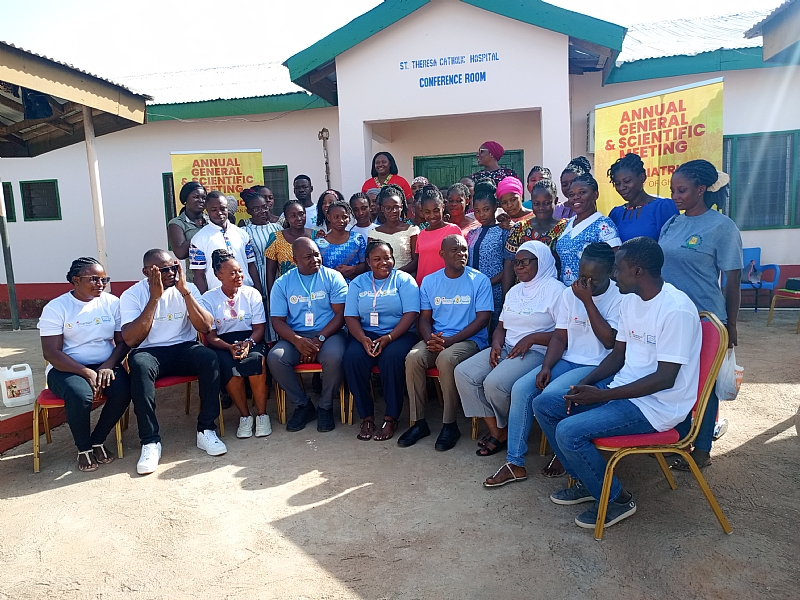The “Mastering Maternal and Newborn Emergencies” project, spearheaded by St. Theresa’s Hospital in Nandom, Ghana, represents a crucial step towards reducing maternal and newborn mortality in underserved communities. Driven by the urgent need for improved emergency care, Dr. Haruna Mahama, a pediatrician at the hospital, conceived the project and secured funding from Grand Challenges Canada. This initiative focuses on empowering frontline health workers with the essential skills and knowledge to effectively manage childbirth and neonatal emergencies, ultimately improving the chances of survival for both mothers and newborns. The project’s pilot phase commenced with an intensive five-day training session held at St. Theresa’s Hospital, targeting health workers within the Nandom Municipality. This training, facilitated by Dr. Samuel Salamat from Komfo Anokye Teaching Hospital, covered a range of crucial topics including neonatal resuscitation, management of postpartum complications, and early detection of warning signs in both mothers and newborns. The project’s design underscores the importance of practical, hands-on training to equip health workers with the confidence and competence to handle critical situations effectively.
The project’s structure incorporates two key components designed to create a comprehensive and responsive system for maternal and newborn care. The first component focuses on in-service training for doctors, nurses, and midwives, providing them with practical skills for managing a wide range of emergencies. This hands-on training emphasizes essential interventions such as assisting babies who are born without signs of life to breathe, managing postpartum complications, and recognizing early warning signs that could indicate potential life-threatening situations for both mothers and newborns. This comprehensive approach ensures that frontline healthcare professionals are well-prepared to handle diverse and often complex emergencies, thereby improving the quality of care provided in these critical moments.
The second component aligns with the Ghana Health Service’s network of practice model, establishing a hierarchical system for referrals and specialized care. This model designates district hospitals like St. Theresa’s Hospital as referral hubs, receiving complex cases from CHPS compounds and other peripheral health facilities. This structured network facilitates efficient and timely transfer of patients requiring specialized care, ensuring they receive the appropriate level of intervention promptly. This system effectively leverages resources across different levels of healthcare facilities, maximizing the impact of specialized expertise available at district hospitals and optimizing the use of available resources to address complex cases efficiently.
A key innovation of the project is the integration of a digital monitoring system at St. Theresa’s Hospital. This system enables real-time tracking of labor cases from connected facilities within the network, providing doctors with immediate access to critical information and allowing for timely intervention. The digital platform allows for remote guidance to be provided to staff at peripheral facilities, minimizing delays in managing critical cases and improving coordination across the network. This innovative approach leverages technology to enhance communication and coordination within the healthcare network, facilitating quicker decision-making and potentially preventing adverse outcomes by enabling timely interventions.
The critical need for such capacity-building initiatives, especially in rural and underserved areas, is undeniable. Dr. Sebastian Ninimiya Yidana, the Medical Superintendent of St. Theresa’s Hospital, highlighted the challenges faced by health workers in these settings, who often manage complex emergencies with limited resources. The training provided through the project directly addresses this gap by equipping healthcare professionals with the skills necessary to effectively respond to critical situations, regardless of resource constraints. This empowerment ultimately enhances the quality of care and improves outcomes for both mothers and newborns in these resource-constrained environments.
The training emphasizes a highly practical, hands-on approach, utilizing simulations to reinforce the learned skills. Participants engage in step-by-step simulations of resuscitating newborns who are not breathing at birth, reinforcing essential procedures in a controlled environment. The training also covers other crucial areas such as essential newborn care, infection prevention and control, and effective referral procedures. This comprehensive training provides a robust foundation for healthcare workers to confidently and competently manage a wide range of situations they are likely to encounter in their practice, ultimately contributing to improved patient outcomes.
The “Mastering Maternal and Newborn Emergencies” project is being piloted across eight districts – five in the Upper West Region and three in the Upper East Region – with each district organizing its own training session for 36 selected health professionals. The decentralized approach allows for targeted training tailored to the specific needs of each district, ensuring wider reach and impact within the chosen regions. The use of a designated health facility within each district as a coordinating hub further strengthens the network of practice model, promoting efficient communication and resource utilization across the healthcare system.
Initial feedback from participants in the Nandom pilot session has been overwhelmingly positive. Midwives, nurses, and other health workers expressed their appreciation for the timely and relevant training, recognizing its potential to significantly enhance their performance and improve service delivery, especially in hard-to-reach areas. The commitment to sharing the acquired knowledge with colleagues further amplifies the project’s impact, creating a ripple effect within the healthcare system and contributing to a more skilled and confident workforce.
The success of the pilot program in Nandom holds significant promise for wider implementation across Ghana. This initiative demonstrates the potential of locally-driven innovation, combined with strategic collaborations and strong leadership, to transform maternal and newborn healthcare even in the most remote regions. The project’s focus on practical, community-based training supported by innovative technologies like the digital monitoring system, offers a replicable model for other regions facing similar challenges in maternal and newborn care. The project’s success holds the potential to serve as a blueprint for nationwide implementation, ultimately contributing to a significant reduction in maternal and newborn mortality across Ghana. This initiative highlights the transformative power of empowering local healthcare professionals with the necessary skills and technology to provide effective, life-saving care in their communities.


